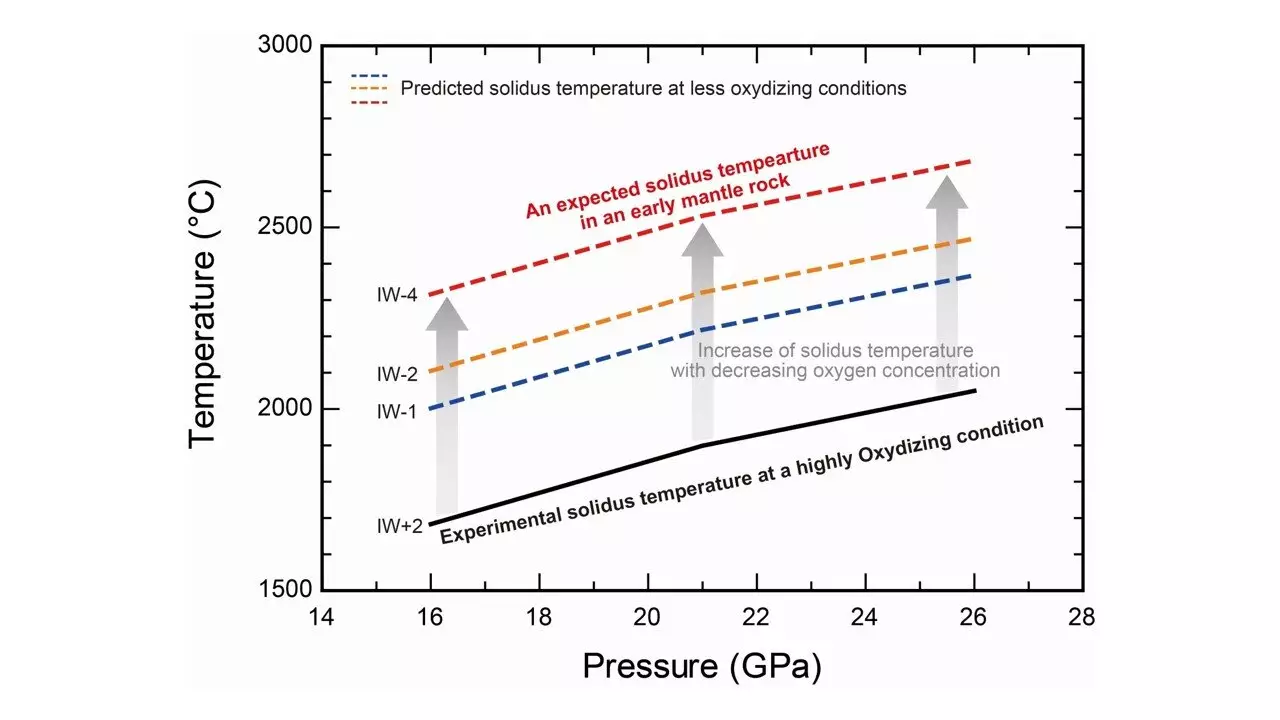The early geological history of Earth is a subject of much fascination among scientists looking to understand our planet’s origins. One significant idea is that the planet’s surface was once engulfed in a molten lava ocean, a condition attributed to the extreme heat resulting from various accretionary impacts—collisions with smaller celestial bodies that added both mass and heat. Establishing a clear picture of this primordial magma ocean is vital for unraveling the complexities of Earth’s formation. However, conventional models regarding the formation and characteristics of this magma ocean have run into substantial discrepancies, particularly concerning the melting temperatures of deep mantle rocks. This ongoing debate adds a layer of complexity to our comprehension of early Earth’s geological conditions.
The Temperature Debate and Its Implications
A key aspect of understanding Earth’s magma ocean lies in accurately determining the melting temperatures of materials found deep within Earth’s mantle. Traditionally, researchers have relied on specific experimental data to craft models relating to the melting points and overall thermal behavior of these rocks. Nevertheless, recent experimental investigations have revealed that melting temperatures may differ significantly—by as much as 200 to 250 degrees Celsius—compared to what was previously accepted. This realization demands a reassessment of the models that have shaped our understanding of core formation and subsequent mantle evolution.
One particularly important concept in this discussion is oxygen fugacity, which refers to the concentration of oxygen available in a given environment. Studies suggest that the levels of oxygen fugacity within the mantle increased significantly during critical phases such as planetary accretion and core formation. However, the extent to which this increase affects the melting temperatures of mantle materials has not been thoroughly understood or delineated. This gap in our knowledge has prompted a new exploratory study aimed at assessing the interplay between oxygen fugacity and magma ocean formation.
In a groundbreaking study led by Associate Professor Takayuki Ishii from the Institute for Planetary Materials at Okayama University, Japan, and Dr. Yanhao Lin from the Center for High Pressure Science and Technology Advanced Research in China, the effects of oxygen fugacity on magma ocean formation were thoroughly investigated. The team, which included esteemed researchers from around the globe, conducted experiments using mantle pyrolite, a composite material representative of Earth’s mantle, at exceptionally high pressures—16 to 26 Gigapascals—over a range of depths akin to those found in the lower mantle.
Their findings revealed a notable correlation: as oxygen fugacity increased, the melting temperatures of the deep mantle materials significantly decreased—by at least 230 to 450 degrees Celsius when compared to those from lower fugacity conditions. If we assume a constant temperature for the molten ocean, this drastic reduction in melting temperatures infers deeper magma ocean floors, with an increase of about 60 kilometers for each logarithmic unit of oxygen fugacity. This influential role of oxygen fugacity raises the urgency for a reevaluation of established models that describe early Earth’s thermal evolution and the mechanics of core formation.
The implications of this research extend beyond the boundaries of Earth itself. Dr. Lin points out that grasping the mechanisms behind melting temperature variations due to oxygen fugacity is also vital for deciphering the geological conditions of other rocky planets capable of developing and sustaining life. As our exploration of the cosmos continues, the applicability of these findings may contribute richly to the field of planetary science and the quest to identify habitable worlds outside of our solar system.
The investigation spearheaded by Ishii and Lin emphasizes the necessity for a paradigm shift in our understanding of Earth’s origins. By factoring in the role of oxygen fugacity in influencing melting temperatures, we not only paint a more nuanced portrait of Earth’s early conditions but also establish a foundation for exploring the geologic histories of other planets. This ongoing quest for knowledge is fundamental to both Earth sciences and advancements in our broader understanding of planetary evolution.


Leave a Reply